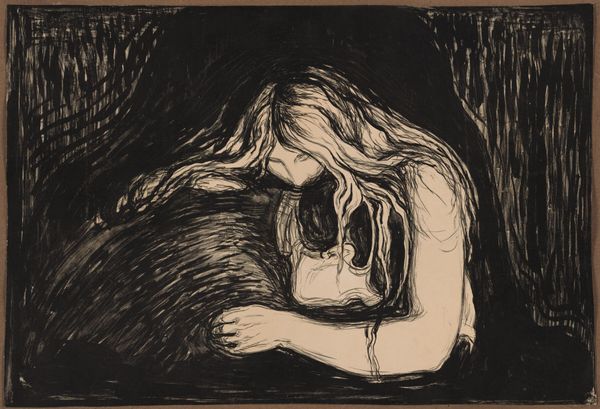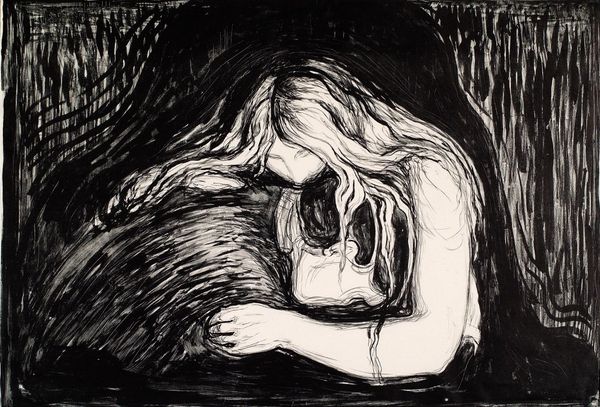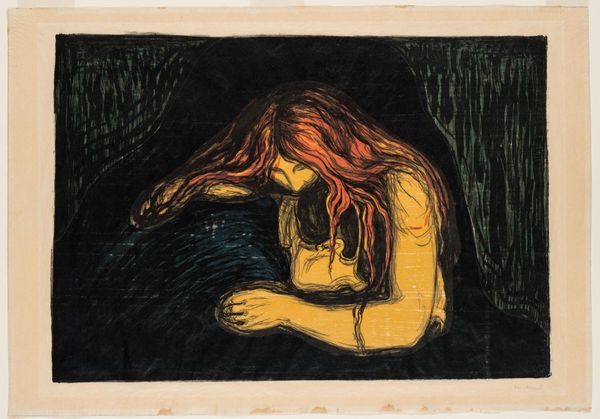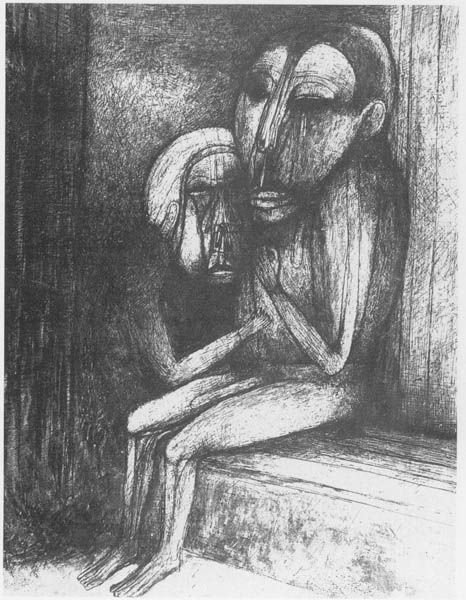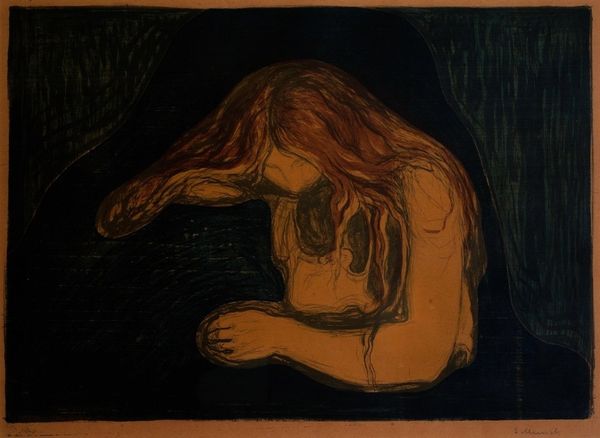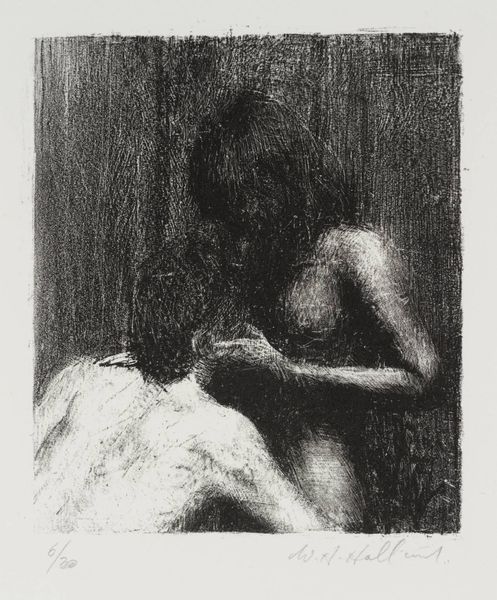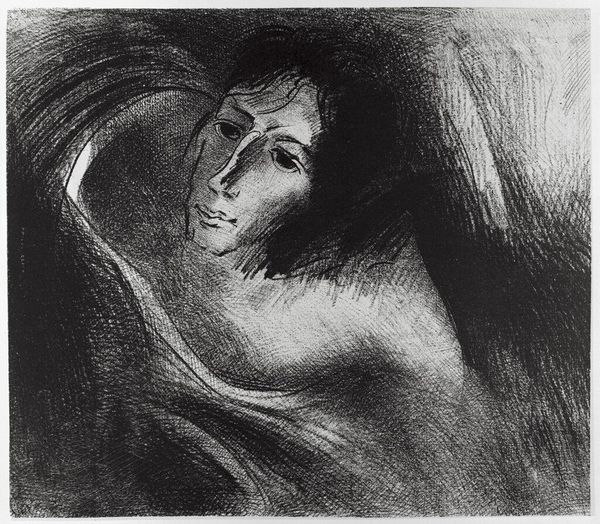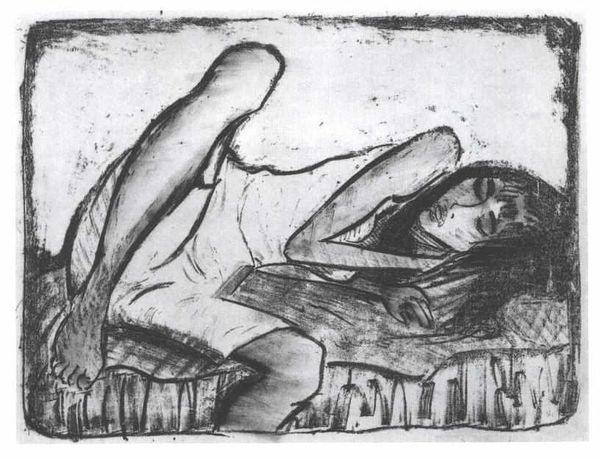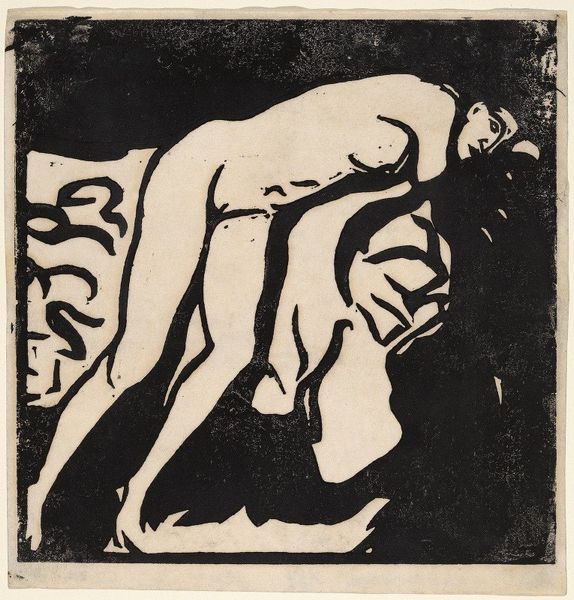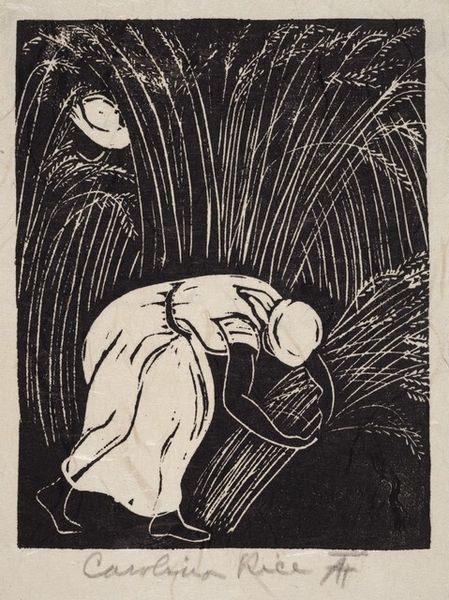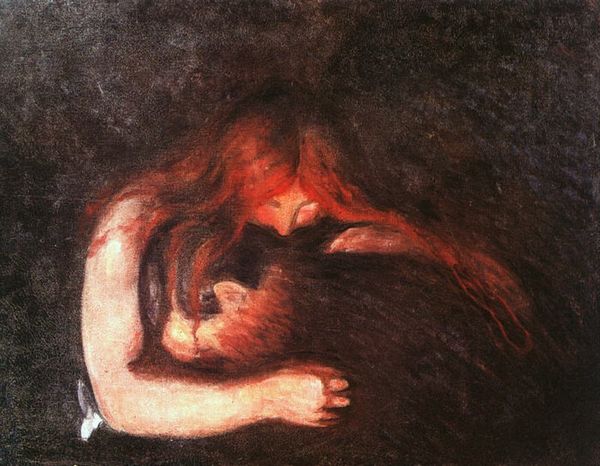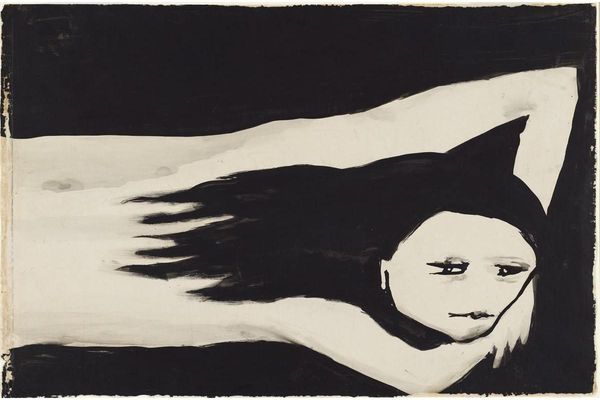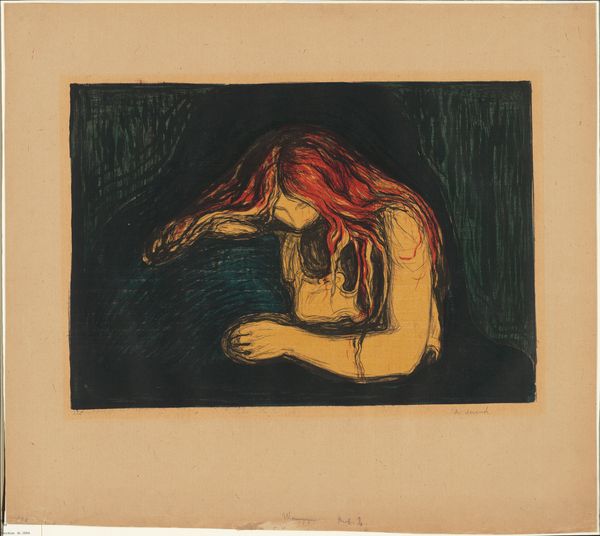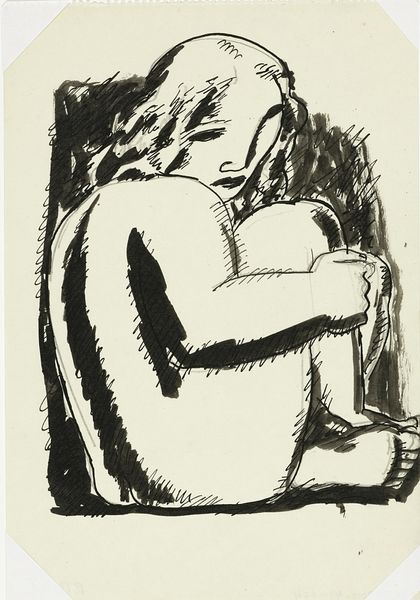
drawing, print, ink
#
drawing
# print
#
figuration
#
ink
#
expressionism
#
symbolism
Dimensions: 38.2 x 54.5 cm
Copyright: Public domain
Curator: Immediately, it feels claustrophobic, almost violently intimate. Is she embracing or being consumed? Editor: We are looking at Edvard Munch's "Vampire II", created in 1902, a stark print rendered in ink. This image is currently housed in the Kupferstichkabinett in Berlin. It's a compelling example of Munch's exploration of intense emotional states, particularly themes of love, pain, and anxiety. Curator: "Love and Pain" sums it up—those grasping hands, her head bowed. I don't see tenderness; I sense a draining. Editor: It’s interesting you say that because the reception of this piece has varied greatly through time. Originally titled “Love and Pain”, Munch was deliberately ambiguous about its meaning, yet societal and critical interpretations began to align this with a vampiric narrative, drawing from the figure of the femme fatale popular during the fin de siècle. Curator: The way the ink bleeds makes it appear to weep; even the background is distressed. A woman, draped over someone or something; he could be her lover. Or prey? Is that too simplistic? I worry about getting drawn into cliché. Editor: What's not clichéd, however, is understanding how the art world framed Munch within the cultural context of Scandinavian identity during the rise of national Romanticism in the 1890s. This piece wasn’t simply about love turned sour; the art scene actively molded his personal narrative, intertwining it with prevalent political undertones. Curator: He becomes a stand-in for… what exactly? Nordic ennui? The fragility of the national spirit? It’s hard to separate artist, art, and prevailing mood. But I do see now it's not simply a bedroom drama! Editor: Exactly. "Vampire II" speaks to how we, the audience and art institutions, project narratives onto art. It embodies Munch’s deeply felt anxiety—magnified by the era’s political and societal tensions. Curator: I walk away thinking less of literal vampires, and more of power dynamics and manipulation... or how we allow interpretations to dictate meaning. A grim, thought-provoking embrace indeed. Editor: Absolutely, seeing “Vampire II” this way demonstrates the fascinating layers of personal and cultural projections we cast onto works like this one. It's an exercise in art history, a testament to symbolic expressionism.
Comments
No comments
Be the first to comment and join the conversation on the ultimate creative platform.
